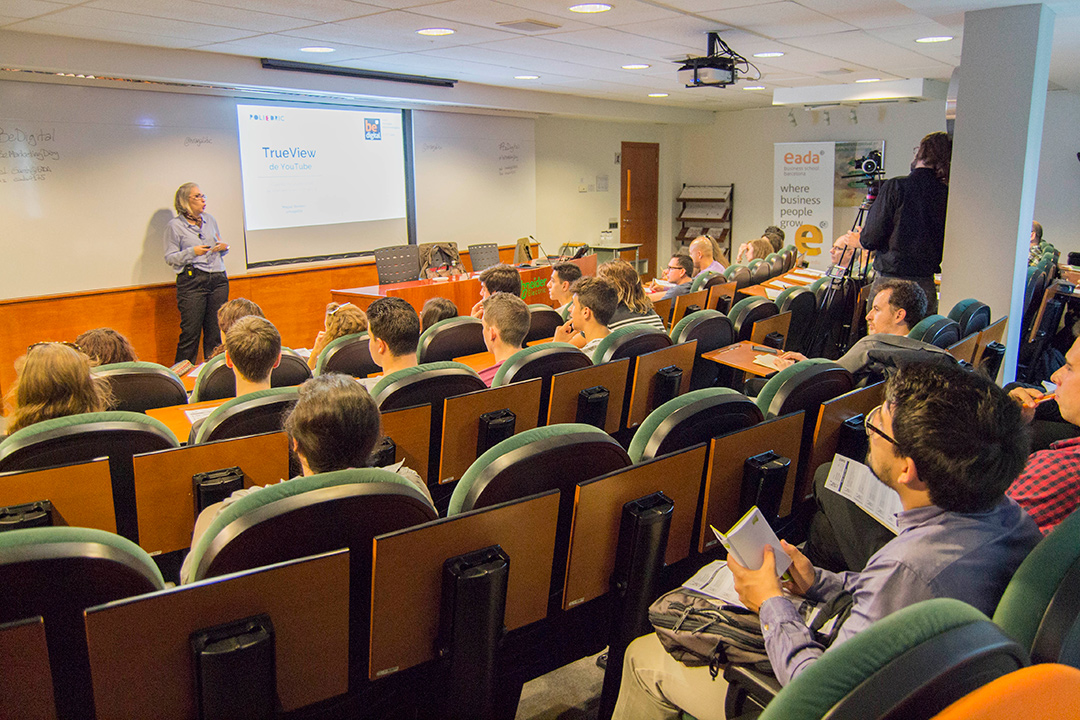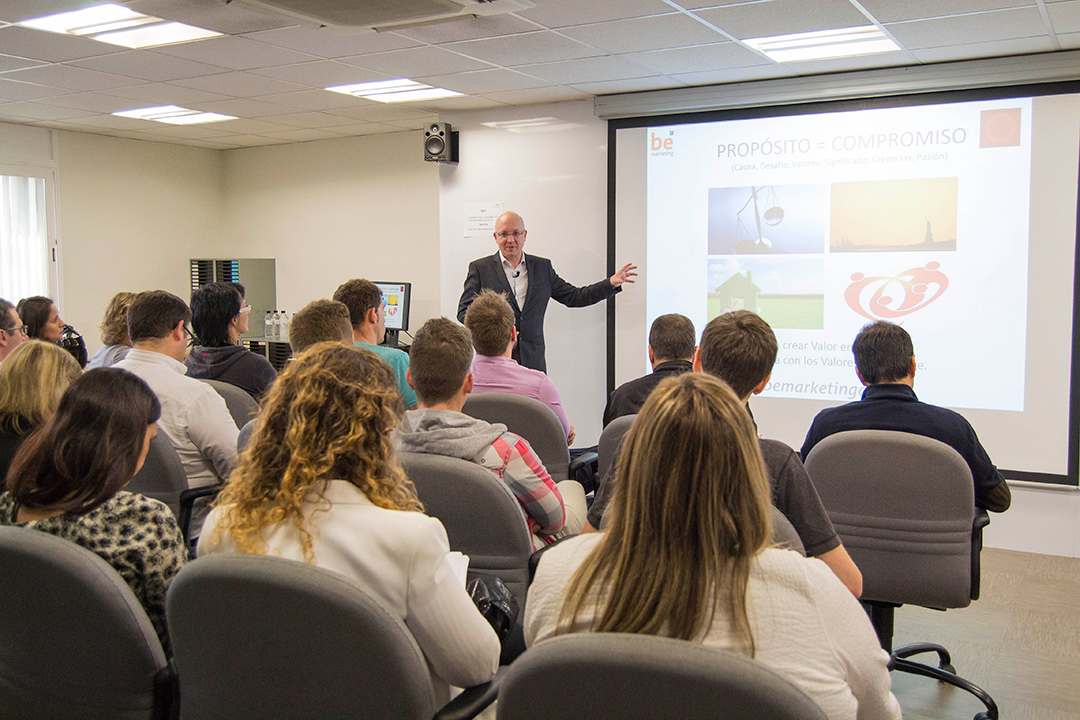Be Marketing Day 2015 analyses the most seductive marketing strategies for consumers
Be Marketing Day 2015 explored marketing trends that are gaining ground worldwide, those that generate the most engagement with consumers and that best cater to their new demands. Whether in order to brush up their knowledge or in search of specific information, hundreds of people, from CEOs and product managers to young people without experience in the corporate world attended this big EADA venue last October 8th.
All of them attended some of the 25 half-hour conferences divided into six main tracks: marketing strategies to sell more (Be Commercial), trends in digital marketing (Be Digital), the customer purchasing experience (Be Experience), marketing in the healthcare sector (Be Healthy), neuroleadership and high managerial performance (Be High Performance) and, finally, strategies for bringing added value to the customer (Be Value).
The importance of engagement

One of the words uttered the most during the day forum was engagement. This is one of the main challenges of companies today to increase their sales, capture new customers, retain those they already have and increase their reputation. There are various marketing strategies for accomplishing this challenge. One of them is to turn the purchase into a satisfactory experience for the consumer. This goes both for physical stores as well as for ecommerce. And it means that the customer can begin their purchase on their mobile and complete it in the store and the other way round. Online and offline are now more interconnected than ever. As some speakers pointed out, companies that don’t grasp this link are doomed to fail, because they aren’t providing the service that consumers are asking for.
On the Be Experience track various examples were presented of actions that have considerably improved sales. One of them has to do with layout options at the point of sale. Layout entails a strategy as to how physical elements are distributed inside the store. Depending on where they are located, consumers may end up purchasing products they didn’t intend to. The aim is to lead the consumer to the products we want to promote or to the less attractive or more hidden areas of the store. Obbio and Plusfresc are two good examples.
Other strategies applied to the point of sale entail combining different businesses in the same space –for example, the hotel Praktik Bakery in Barcelona, which combines a bakery and an artisan cakes shop–, the Markthal Rotterdam (Holland)– an indoor market the size of a football field featuring a wide variety of culinary delights, which turn the purchase into a culinary experience– or the possibility of putting on temporary displays in shop windows in order to attract the target –like in Dover Street Market in London.
It is here that the social media play a crucial role because this is where the consumer experience becomes tangible. It is through the networks that consumers interact with brands and share the purchasing experience with their friends, and this can attract new customers. But, what’s more, the social media can also be used to gather customer data and direct the relationship with them outside the networks whilst at the same time customizing the product. This is what is known as social CRM, a concept that was discussed in Be Digital.
Marketing to attract customers

This edition of Be Marketing Day also looked at digital marketing techniques that are used to generate traffic on the web and capture potential customers. One of the options that were discussed was the YouTube’s TrueView formats family because it is a non intrusive advertising content which may be useful for viral brand campaigns.
Other topics that were discussed were SEO –Search Engine Optimization– of contents that are compiled for the web, and corporate blogs, as well as the social media strategy –which includes all the actions that are implemented on social networks. These are the three main pillars of what is known as inbound marketing, a non intrusive strategy for attracting customers that differs from –more persuasive– conventional advertising formats. Thus, for example, stemming from content that brings value to the user and that provokes a reaction –which may take the form of a comment or a request for information about the product from the company– we can convert qualified leads to customers. Proof of this, as was pointed out in Be Digital, is that the leads gathered through quality content increase sales opportunities by 20%
Brand humanization

All these marketing strategies reflect the obsession that brands have with getting closer to customers, with interacting with them. The healthcare sector is one of the best examples of progressive brand humanization. Patients are now better informed than ever and they want to manage their own illness. What’s more, the “Internet of Things” has enabled a new form of interaction with healthcare professionals through telemedicine and specialist apps. On top of this, the medicine commercialization model must now take into account a whole series of values added to the product that improve patients’ health and provide a clear competitive edge.
The Be Healthy track addressed all these issues as well as e-health technology and mobile phone related strategies: telemedicine, continuous accredited online medical training, interaction with consumers, mobile apps that monitor and improve the state of health of citizens and gamification and the use of game dynamics to transmit information, brand values or create a user experience.
